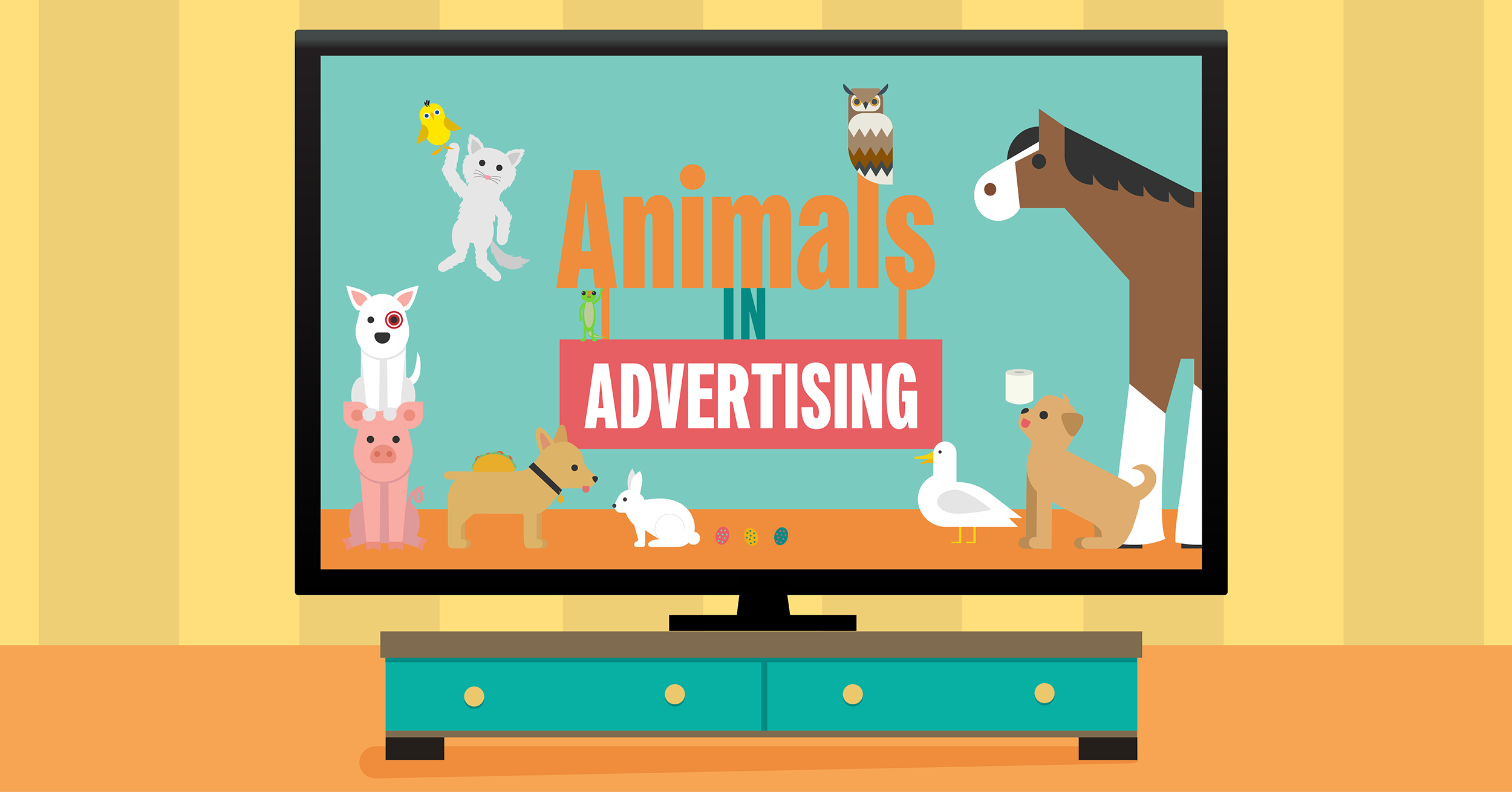

3 Reasons to Add Animals to Your Advertising
Animals have been used in advertising since the days of Nipper the RCA Dog and Mr. Owl, the rude sucker-munching, crunching Tootsie Pop mascot. Psychologically speaking, humans are predisposed to be drawn to furry creatures. Studies show animals in advertisements increase feelings of emotional connection. Making these two or four-legged friends the stars of the show is not only the most effective way to reach your audience and build brand awareness, but it’s cute, too. Without turning your next shoot into a zoo, here are three reasons to use animals in advertising.
Animals are straight-up funny
Animals doing human-like tasks, otherwise known as anthropomorphizing, grabs attention, makes viewers laugh and has been proven successful time and again. Humans have the greatest understanding of their own behaviors: it’s something we are exposed to from cradle to grave. Because of this, we have a tendency to apply these human-like characteristics to animals and even inanimate objects, according to a recent article on the neuroscience behind anthropomorphizing animals. Humans prefer when animals resemble or have characteristics resembling that of our own species, such as animals that walk on two legs as opposed to those that solely walk on four. It doesn’t matter if the animal is real or CGI – it just needs to loosely resemble a human or human-like behavior to achieve a connection with the consumer. This process of anthropomorphizing assures a consumer’s feeling of connection between themselves and the brand. However, it’s important to not overdo the humanization. Make sure to leave plenty of animal-like quirks in the character or mascot’s personality.
Characters like the 9 Lives’ Morris the Cat, Frosted Flakes’ Tony the Tiger and Duke the Golden Retriever from Bush’s Baked Beans demonstrate success stories through the use of animals as the (sometimes furry) face of the brand. Real animals or fake, one-offs or mascots, animals acting like humans tend to resonate well with viewers.
Animals are more eye-catching and memorable
A brand name can be based on a variety of things: names of founders, Latin or other languages and even an inside joke. No matter where the name derives from, recognition is essential for brands to succeed. This can be challenging when consumers don’t know how to pronounce the name of the brand they are hopefully recalling. Enter stage left: the Aflac Duck and the GEICO Gecko®. These now-famous “spokes-animals” were chosen based on namesake to not only help consumers recall the brand, but to teach audiences how to pronounce the names, helping these companies build lasting positive relationships with viewers.
The humorous British-accent-bearing gecko not only helped people purchase insurance, but also taught consumers that the company name was pronounced “GEICO”, not “gecko”. The loveable reptile made his big-screen debut in 1999-2000, now approaching 20 years as the face of the company and proving first-hand that animals in ads resonate well with audiences. But make sure that your ad isn’t remembered as just that one spot with the cow, the horse or the dog.
Animals make your brand claims more relatable and believable.
Animals help brands succeed through a solid tie-in to a product or overall brand promise. Whether a soft Labrador puppy for luxury-ply toilet paper, a super-cool soda-sipping polar bear or some very bitter crows, animal attributes and personalities can communicate a brand message—often without saying anything at all. Perhaps you can’t feel the toilet paper, but surely you’ve felt a soft puppy before.
Choosing the right species means connecting the values of your brand to those of an animal. Sure, some can be a bit of a stretch (lookin’ at you, Quiznos monkey…err, things), but others can come more naturally. Take for instance our work for client Wisconsin Lottery. To communicate the new Peng-Win Countdown scratch game we, of course, featured two penguins to be the face of the campaign. The TV spot, “The Perfect Gift,” won Hoffman York and Wisconsin Lottery two Addy Awards.
Since black and white films, cassette tapes, and the World Wide Web, animals have played an important role in brand success and effective advertising. By building an emotional connection, aiding consumers in brand recognition and pronunciation, as well as providing fun stories sure to entertain, animals in advertising really are the cat’s meow.
As easy as it seems to let the dogs out in your next campaign, using animals correctly takes practice and the right people. Hoffman York is a full-service advertising and marketing communications agency with experience working with animals. To learn more about how HY can help your brand succeed, contact us at ROI@hoffmanyork.com.